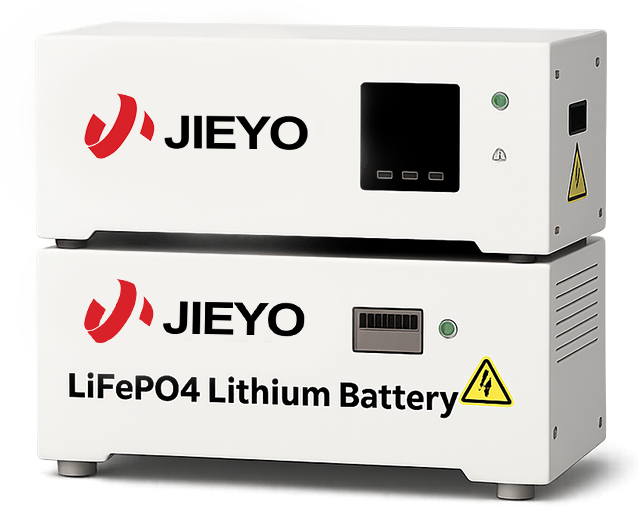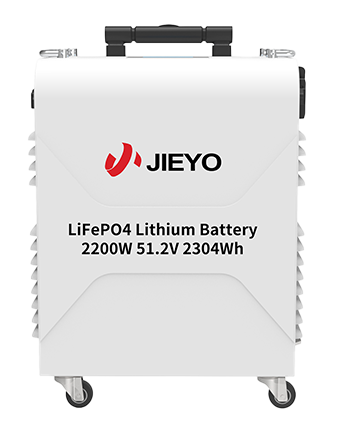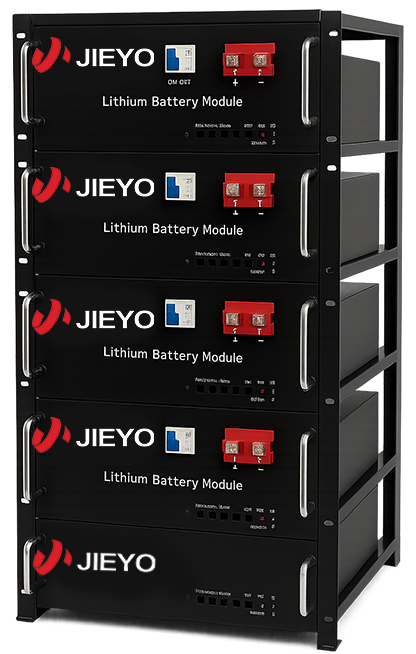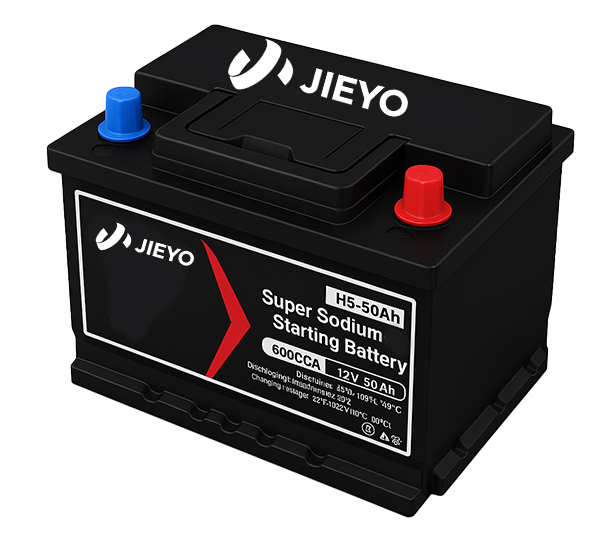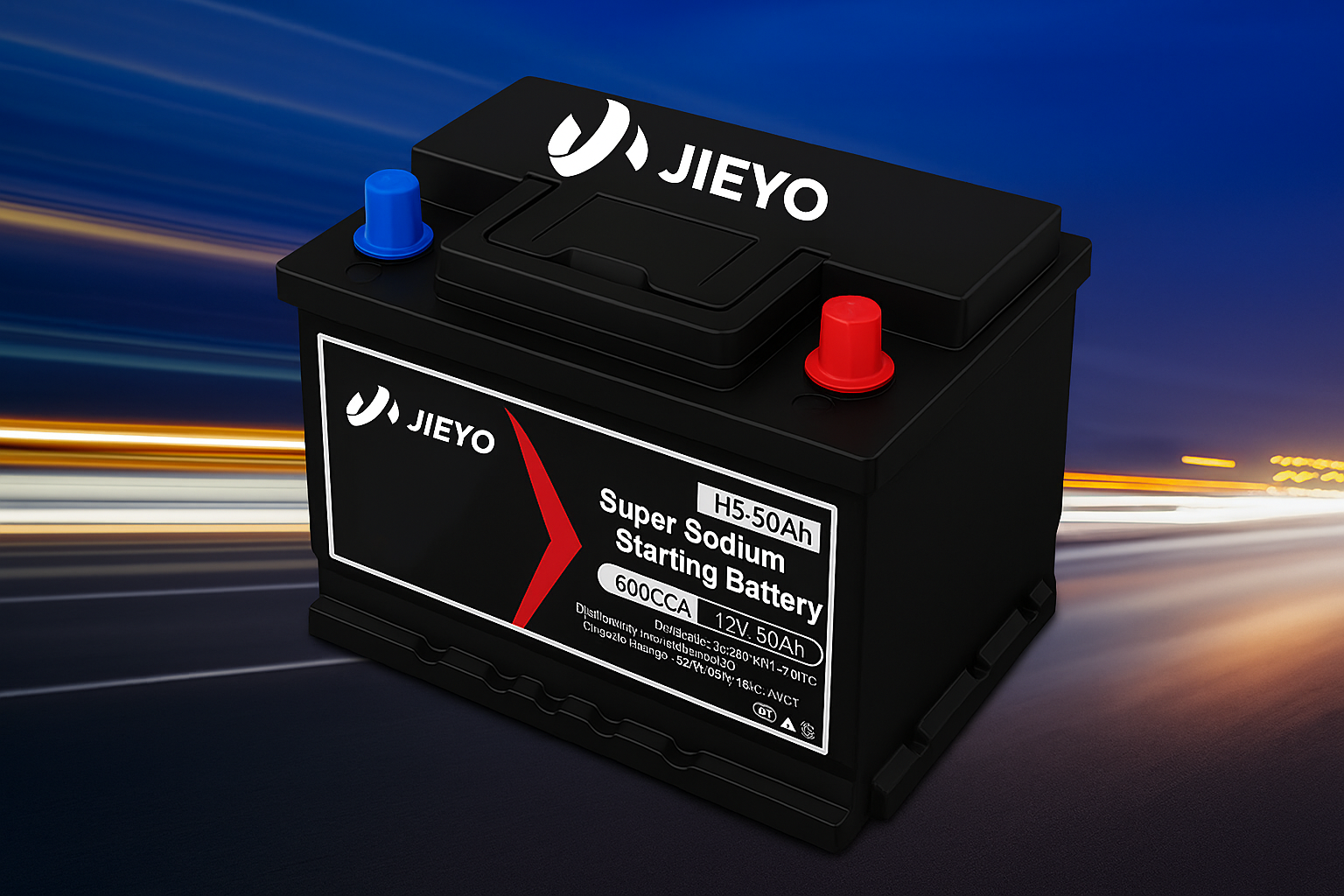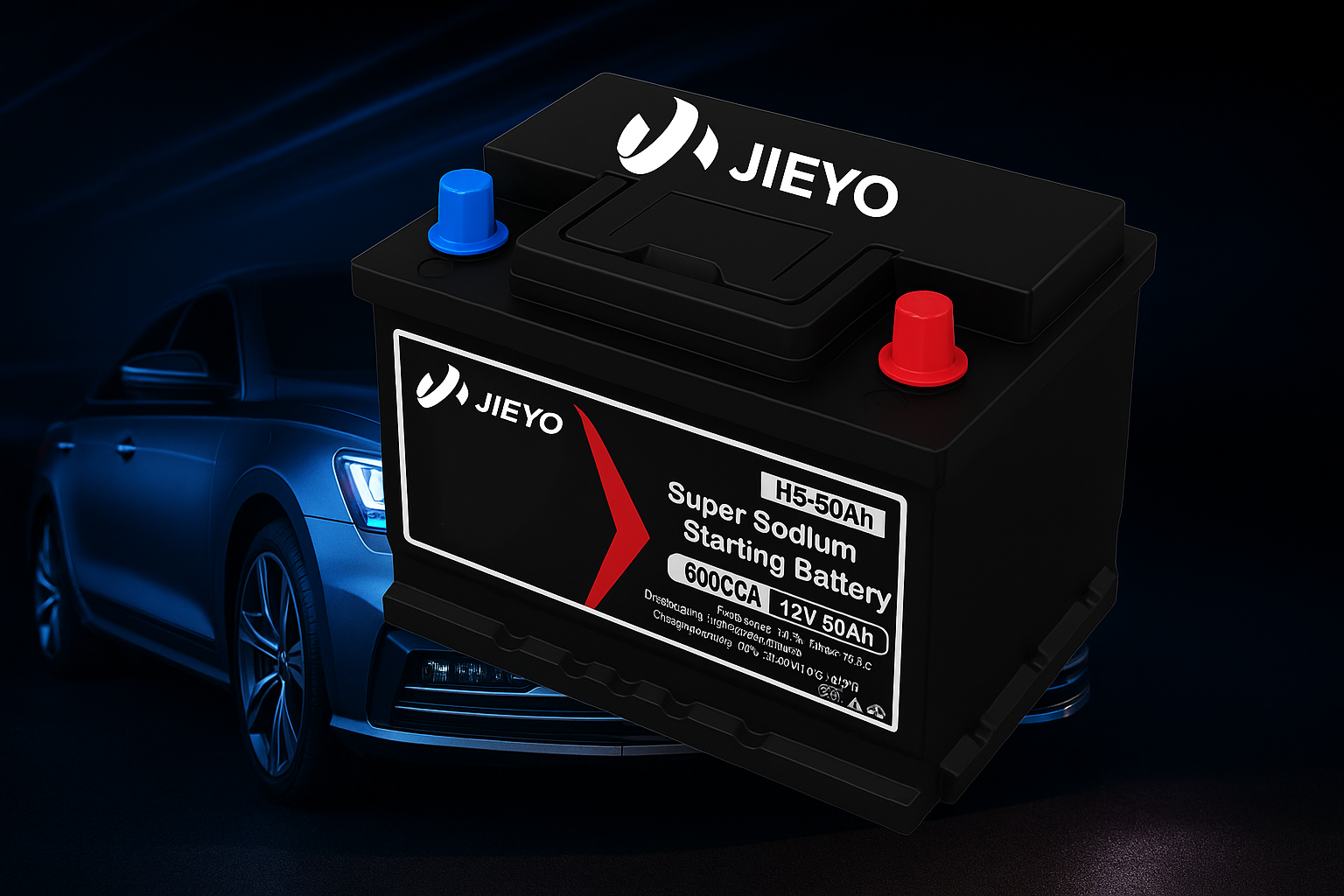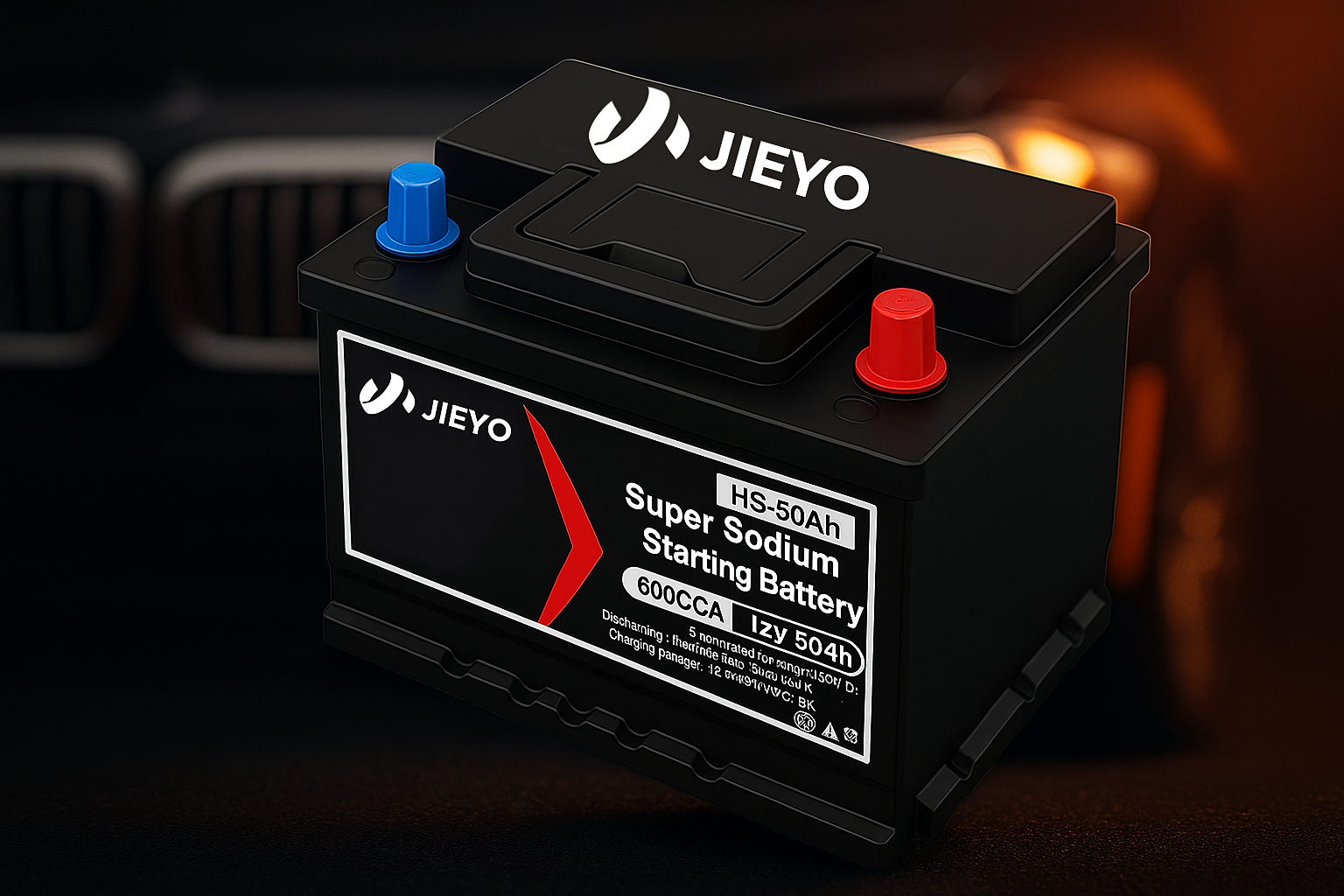Popis
Stohovateľná batéria JIEYO na skladovanie energie - 48 V / 51,2 V LiFePO₄, 5 kWh-25 kWh, CAN/RS485, 6000+ cyklov
Stránka Stohovateľná batéria na skladovanie energie JIEYO je modulárny, vysoko bezpečný systém na skladovanie LiFePO₄ určený pre solárne aplikácie v domácnostiach a ľahkých komerčných zariadeniach. Každý 51,2 V modul poskytuje približne 5,12 kWh využiteľnej energie a moduly zvisle na seba na stupnici od 5 kWh až 25 kWh (a viac v prípade polí s viacerými zásobníkmi). Pomocou stránky Chémia LFP, Životnosť viac ako 6000 cyklova CAN/RS485/RS232 komunikácie s bežnými hybridnými striedačmi, je praktickým jadrom záložného systému mimo siete, hybridného systému alebo záložného systému v sieti.
Vysoko výkonná platforma LFP (48 V / 51,2 V)
-
Chémia: Fosfát lítia a železa (LiFePO₄ / LFP) pre prirodzene stabilné tepelné správanie a dlhú životnosť.
-
Nominálne napätie modulu: 51.2 V (16S LFP).
-
Energia na modul: ≈ 5,12 kWh; zásobník 1-5 modulov pre ≈ 5-25 kWh.
-
Životnosť cyklu: Viac ako 6000 cyklov (typická hĺbka vybitia v domácnostiach), ktorá vydrží viac ako 10 rokov každodenného používania.
-
Efektívnosť pri spiatočnej ceste: (typicky > 95%), čím sa znižujú systémové straty a zlepšuje sa vlastná spotreba fotovoltaických článkov.
-
Nízke samovybíjanie: dobre drží náboj počas sezónnej alebo núdzovej pohotovosti.
Prečo práve LFP na domáce skladovanie? V porovnaní s NMC a olovenými kyselinami ponúka LFP vynikajúca životnosť cyklu, lepšia tepelná stabilitaa plochejšie krivky napätia, ktoré sa premietajú do predvídateľného výkonu a nižších nákladov na kWh počas životnosti.
Skutočná stohovateľná inštalácia bez použitia náradia
-
Vertikálny dizajn zásobníka: moduly sa mechanicky vyrovnávajú a uzamykajú; horný riadiaci balík/BMS riadi celý zásobník.
-
Možnosť postavenia na podlahu alebo do skrine/rack: hodí sa do úžitkových priestorov, garáží, skríň so zariadením alebo stien meničov.
-
Rýchle elektrické prepojenia: krátke, označené jednosmerné zbernice/káble minimalizujú čas potrebný na zapojenie a chyby.
-
Neskôr rozšíriteľné: začať na 5 kWh a rozšíriť na 10/15/20/25 kWh podľa toho, ako rastie zaťaženie - nie je potrebná žiadna zmena návrhu.
-
Čistá stopa: malá hĺbka pre stiesnené priestory; predný servisný prístup zjednodušuje údržbu.
Inteligentná BMS a systémová komunikácia
-
Monitorovanie balenia: napätie, prúd, teplotu a stav nabitia v reálnom čase s vyvažovaním článkov.
-
Ochrana: prepätie/podpätie, nadmerný prúd, skrat, nadmerná teplota a vypnutie nabíjania/vybíjania.
-
Rozhrania: CAN / RS485 / RS232 na komunikáciu v uzavretej slučke s hybridnými striedačmi a energetickými bránami.
-
Zaznamenávanie udalostí: pomáha pri diagnostike a popredajnom servise; podporuje aktualizácie firmvéru (v prípade potreby).
-
Kompatibilita: vhodné pre off-grid, hybrid-grid a on-grid topológie; mapy značiek meničov sú k dispozícii na požiadanie.
Režimy pripojenia k sieti
-
Mimo siete: spárujte s kompatibilným hybridným/ off-grid meničom pre autonómne napájanie tam, kde nie je k dispozícii sieť.
-
Hybridná sieť: samospotreba, šetrenie v čase špičky a arbitráž v čase spotreby; nabíjanie z fotovoltaiky cez deň, vybíjanie v čase špičky.
-
Zálohovanie v sieti: udržiavať základné obvody počas výpadkov pomocou ATS/záložného výstupu z meniča (podľa miestnych predpisov).
Strojárstvo a environmentálne inžinierstvo
-
Trieda ochrany: možnosti až do IP54-IP65 (v závislosti od modelu), odolné voči prachu a náhodnej vlhkosti.
-
Chladenie: vzduchom chladené tepelná dráha navrhnutá pre tichú prevádzku a dlhú životnosť.
-
Prílohu: oceľový alebo zliatinový plášť s povrchovou úpravou práškovým lakom; rohové výstuhy pre logistiku a manipuláciu na mieste.
-
Použiteľnosť: modulárna architektúra umožňuje výmenu na úrovni modulov, aby sa minimalizovali prestoje.
Bezpečnosť podľa návrhu
-
Bezpečnosť LFP na úrovni buniek s keramickými separátormi a prizmatickými článkami/článkami na báze elektrického napätia.
-
Balenie poistiek a stýkačov s predradenými obvodmi na ochranu prípojníc a jednosmerného prepojenia meniča.
-
Izolácia a izolácia testované podľa príslušných noriem; pri vysokonapäťových komínoch sa dodržiava vzdialenosť pri plazivej rýchlosti.
-
Dokumentácia o zhode: CE / RoHS / MSDS / UN38.3 k dispozícii pre logistiku a vstup na trh.
Typické elektrické charakteristiky*
(* Hodnoty sa líšia podľa konfigurácie; vyžiadajte si presný technický list pre váš trh.)
-
Menovité napätie: 51,2 V na modul; viacmodulové zásobníky spravované systémom BMS.
-
Využiteľná energia: ≈ 5,12 kWh na modul; 10-25 kWh v súboroch 2-5 modulov.
-
Odporúčaná rýchlosť C: 0,5 C nepretržite; 1 C vrchol v závislosti od meniča a okolitých podmienok.
-
Okno DoD: 90-100% konfigurovateľný; štandardná záruka viazaná na odporúčanú DoD.
-
Efektívnosť pri spiatočnej ceste: > 95% typické pre moderné hybridy.
-
Teplota: nabíjanie 0-45 °C, vybíjanie -10-55 °C (typ.); na dosiahnutie najlepšej životnosti skladujte pri teplote 15-30 °C.
-
Komunikácia: CAN / RS485 / RS232 s protokolmi špecifickými pre výrobcu, ktoré možno vybrať pomocou DIP/firmvéru.
Prípady použitia
-
Vlastná spotreba fotovoltaiky v domácnostiach: uskladnenie denného slnečného žiarenia na pokrytie večerných špičiek; zvýšenie využitia fotovoltaiky.
-
Záložné napájanie: počas výpadkov udržiavať v prevádzke smerovače, osvetlenie, počítače, bezpečnostné systémy, chladničky a obehové čerpadlá.
-
Úspora v špičke a TOU: nabíjať mimo špičky, vybíjať v špičke, aby sa znížili účty.
-
Malé mikrosiete C&I: stabilizovať zaťaženie v maloobchode, dielňach, telekomunikačných prístreškoch a vzdialených chatách.
-
Chatky pre obytné automobily a námorné chaty: stacionárne komíny môžu podporovať dlhšie pobyty s tichou energiou bez paliva.
Príklady dimenzovania systému (ilustratívne)
-
5 kWh (1× modul): malé byty, routery/IT + osvetlenie + občasné zálohovanie spotrebičov.
-
10 kWh (2×): typický hybridný striedač s výkonom 3-5 kW pre večernú spotrebu a krátke výpadky.
-
15 kWh (3×): dlhšia autonómia pre chladničky, zariadenia na prácu z domu a čerpadlá.
-
20-25 kWh (4-5×): rozšírená záloha pre väčšie domy; dobre sa spája s 8-12 kW fotovoltaickými panelmi a 8-10 kW hybridmi.
Pri plánovaní času behu je rýchly odhad nasledovný:
Čas prevádzky (h) ≈ Kapacita (Wh) × DoD × účinnosť systému / priemerné zaťaženie (W).
Pri 25 kWh s účinnosťou systému 90% DoD a 92% máte ≈ 20,7 kWh - dosť na ~20 hodín pri priemernom výkone 1 kW.
Poznámky k inštalácii a uvedeniu do prevádzky
-
Párovanie meniča: vyberte menič s podporovaným profilom CAN/RS485; nastavte typ batérie na LFP a vyberte profil JIEYO (alebo kompatibilný).
-
Zapojenie jednosmerného prúdu: dodržiavajte polaritu a špecifikácie krútiaceho momentu; používajte izolátory a poistky na jednosmerný prúd s vhodnou hodnotou podľa predpisov.
-
Uzemnenie: spojte kryt a stojan podľa miestnych elektrických predpisov.
-
Vetranie: umožnite voľný priestor vpredu/boku pre prúdenie vzduchu; vyhnite sa uzavretým skrinkám v miestnostiach s vysokou intenzitou prostredia.
-
Adresovanie firmvéru a BMS: pri stohovaní nastavte adresy DIP vo vzostupnom poradí; overte na obrazovke/aplikácii meniča.
-
Uvedenie do prevádzky: nabíjanie na 100% pri prvom spustení na synchronizáciu SOC a vykonanie vyváženia BMS.
Údržba a skladovanie
-
Pravidelné kontroly: potvrdiť krútiaci moment na prípojniciach, skontrolovať ventilačné cesty a skontrolovať protokoly BMS.
-
Dlhodobé skladovanie: udržujte na úrovni 40-60% SOC; dopĺňajte každé 2-3 mesiace.
-
Firmvér: pri vydaní nových profilov meniča alebo optimalizácií aplikovať aktualizácie prostredníctvom schválených kanálov.
-
Prax majiteľa: vyhýbajte sa extrémnemu teplu alebo trvalému vybíjaniu s vysokým obsahom C, aby ste maximalizovali životnosť.
Čo je v zásobníku (typické)
-
51.2 V Batériové moduly LFP (množstvo na objednávku)
-
Horná BMS/riadenie modul s displejom/indikátormi
-
Základná doska / stohovací rám, prípojnice medzi modulmi a spojovací materiál
-
CAN/RS485 komunikačný kábel k meniču, napájacie káble DC (v závislosti od modelu)
-
Užívateľská príručka a rýchla príručka; inštalačná súprava
(Obsah sa líši podľa regiónu a vybraného príslušenstva.)
Certifikácie a kvalita
-
Bezpečnosť a doprava: MSDS & UN38.3
-
Súlad s trhom: CE / RoHS (ďalšie sú k dispozícii na vyžiadanie)
-
Továrenská kontrola kvality: skríning prichádzajúcich buniek, porovnávanie buniek, testy starnutia modulov a úplné funkčné testy s protokolovaním BMS
Služby OEM / ODM
-
Značkovanie a označovanie: logo, farebné akcenty, menovky, obaly
-
Elektrické možnosti: dĺžky káblov, PV/komunikačné konektory, menovité poistky, rozhranie pre vypnutie
-
Mechanické varianty: montážne sady do stojana, držiaky na stenu, prachové filtre pre náročnejšie podmienky
-
Mapovanie protokolu: Profily CAN/RS485 pre konkrétne značky meničov; integračné príručky pre inštalatérov
Kľúčové atribúty (snímka)
-
Typ batérie: LiFePO₄ (LFP)
-
Modelová rada: JY-S5000 / HV zásobník (regionálne pomenovanie sa môže líšiť)
-
Miesto pôvodu: Guangdong, Čína
-
Pripojenie k sieti: Mimo siete, Hybridná sieť, V sieti (prostredníctvom kompatibilného meniča)
-
Trieda ochrany: do IP54-IP65 (podľa konfigurácie)
-
Chladenie: Chladenie vzduchom
-
Životnosť cyklu: 6000 cyklov (typ.)
-
Komunikačné porty: RS485 / CAN / RS232
-
OEM/ODM: Prijateľné
-
Používanie: Priemyselné / komerčné / rezidenčné skladovanie energie
Hmotnosti a rozmery závisia od počtu modulov; vzorové hmotnosti jedného modulu sa zvyčajne pohybujú v rozmedzí 40-50 kg s lineárne rastúcou celkovou hmotnosťou komína.
Pre koho je určená
-
Majitelia domov, ktorí chcú tichý, bezpečný solárne úložisko s možnosťou rastu
-
Inštalatéri štandardizujú na 51,2 V zásobníková platforma od jednotlivých domácností až po malé podniky
-
Kupujúci projektu, ktorí potrebujú zdokumentované, certifikované Ukladanie LFP s CAN/RS485 integrácia
-
Používatelia, ktorí hľadajú energetickú odolnosť šetrenie v špičke, zálohovanie a vlastná spotreba v jednom systéme

